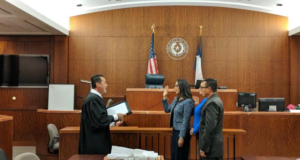Blinds For Small Windows can enhance any room’s ambiance. From allowing an abundance of natural light to protecting privacy and reducing glare, there’s something to suit every space.

Look for blinds with uniform slat widths to accommodate small windows. They’re simple and work well with your décor. They can also be easier to keep clean.
Venetian blinds are a classic window treatment that has stood the test of time. They are still popular today because of their practicality and versatility. They can be easily cleaned and offer a wide variety of light control options to suit your needs. They are also a great choice for small windows, as they can create the illusion of space and make your room feel bigger.
Venetian Blinds are made from wood or metal and come with a variety of slat widths to suit your taste. They are also available in a wide range of colours and can be customised to match your home décor. Some are available in cordless versions to prevent accidents, and others are self-levelling to help eliminate slanting. If you choose wood, you can also opt for a slat type that is moisture resistant to withstand the humid climate of Australia.
The slats on these types of blinds can be adjusted to block out sunlight and keep it from entering your room. They are easy to clean and can be wiped down with a cloth or feather duster every few weeks to keep them dust-free. However, they do require more maintenance than other types of blinds. If you are unsure about what kind of blinds to purchase, it is best to consult an expert. They can recommend the perfect style to complement your room’s decor and will make it easier to choose a color scheme.
These blinds are an excellent option for smaller rooms in your home, such as the bathroom or kitchen. They can be easily installed within a Perfect Fit frame, and they can be operated with either a wand or a cord to ensure safety and privacy. They are also easy to clean and can be wiped down using a microfiber cloth or feather duster.
They are also a good option for small windows as they can be opened outwards to allow in light and air. They can be trimmed to any size, and they can be fitted with a valance or pelmet to add a finishing touch. They are also available in a wide variety of colours, from neutral shades to vibrant hues.
Wooden Blinds
Wooden blinds add a rich, luxurious look to small windows. Available in a wide range of colours and finishes, they can complement almost any style of decor. They also provide exceptional energy efficiency, reducing your heating and cooling costs. They are a great choice for living rooms, bedrooms, and offices. However, they may not be suitable for high-moisture areas like bathrooms and kitchens as they can warp or rot due to exposure to water.
When paired with curtains, wooden window blinds create an elegant boutique feel in any space. They are the ideal choice for any room, allowing you to control the amount of light that enters your home while maintaining privacy. They are also a great option for doors with windows that lead out to your deck or patio, as they can help keep the sun and breeze from blowing in through those spaces.
The slat size of wooden blinds is a critical factor to consider when selecting this type of window treatment. Smaller slat sizes are perfect for small windows as they create a sleek, unobtrusive appearance. For larger windows, they can be hung vertically or horizontally, depending on the desired look.
Another important consideration is how the wooden blinds will be mounted to your window frame. Inside mounts work best for windows that sit flush with the wall, but outside mounts are suitable for any kind of window. Uniform vane widths of 2 1/2 to 3 1/2 inches suit most small windows, but curved tracks and bent vanes are also available for angled or arched windows.
Faux wood blinds are an excellent alternative to wooden window blinds, as they offer the same design versatility and aesthetic appeal without the added maintenance and durability. Faux wood blinds are crafted out of a harder material that resists scratching and fading more effectively than their natural counterparts, making them an excellent choice for high-traffic areas or homes with young children and pets.
Another benefit of faux wood blinds is their moisture and humidity resistance. They are easy to clean, and can be used in almost any room of your home. Their durable construction also makes them a smart investment, as they are less likely to rot or warp than natural wood blinds over time.
Aluminum Metal Blinds
With a sleek, minimalist look that fits with most decor styles, aluminum blinds are one of the most durable window covering options on the market. Available in a wide variety of colors and slat sizes, they offer customizable options to suit any space. Additionally, many styles of aluminum blinds feature energy-efficient designs and insulation that help reduce heat loss in the winter and cool air from escaping in the summer.
Some brands also feature tilting vanes that can be opened and closed to double the view area of the blind when open, providing more natural light and an unobstructed view outside the window. You can also choose to add a wand to lift and tilt your aluminum blinds, or you may prefer the simplicity of cordless lifting systems that are designed to be safe for children and pets.
Another option for small windows is faux wood composite blinds, which offer the beauty of wood with materials that are more durable and resist warping, fading, and cracking. Faux wood composites are also great for high-impact spaces like kitchens and bathrooms, where moisture and humidity are common.
When choosing blinds for small windows, consider how much privacy you desire as well as how easy it will be to clean your window treatments. Aim to avoid any with strings, as these can pose a safety risk for small children and pets, and they don’t tend to look as polished in the end.
If you’re looking for a more streamlined look, you can opt to have your aluminum blinds sprayed with a special treatment that helps repel dust and dirt. This is an ideal option for home offices, basements, and garages where you want to minimize the amount of dust and grime on your blinds. Alternatively, you can purchase a set of aluminum blinds with a coordinating valance to create a cohesive, stylish look for your room. For more information on selecting the best blinds for your small windows, visit Norman’s “Where To Buy” page and schedule a free in-home or virtual consultation today!
Cellular Blinds
A popular choice for small windows, cellular shades (also known as honeycomb blinds) are highly energy efficient with superior insulation properties that keep homes warm in winter and cool in summer. These window blinds trap air inside their distinct cells in an accordion-like arrangement, effectively insulating the entire window. They can be further enhanced by adding a metallized polyester layer that blocks heat and reflects solar heat, significantly increasing thermal performance.
The distinct honeycomb shape of cellular shades provides an attractive aesthetic for any space in the home. These window treatments are available in a wide variety of colors and fabrics, allowing homeowners to customize their look according to personal preferences. They also offer a range of features, including light filtering and room darkening options to diffuse or block natural sunlight as needed. They can even be made motorized for convenient operation.
Cellular shades and quilted window blinds are a practical, stylish choice for any living area. They’re especially ideal for bedrooms, where they can help create a restful environment and reduce outside noise that may disturb sleep. They can also reduce glare, as they block out 99% of harmful UV rays that can create uncomfortable glare and fade artwork and furniture in the bedroom.
Unlike some other types of window blinds, cellular shades are available with a top-down/bottom-up option for increased flexibility and privacy. They’re also available with a cordless lift, eliminating hazardous dangling cords that pose a risk of strangulation to children and pets. Additional safety features include cord cleats and tension devices that can help keep cords taut and out of reach, for added peace of mind in homes with kids or pets.
Cellular shades are suitable for many situations, with the most common applications being small windows in living spaces and bedrooms. However, they are also a great option for rooms with shallow depth windows, where inside mount solutions can be difficult to achieve with other window treatments.


